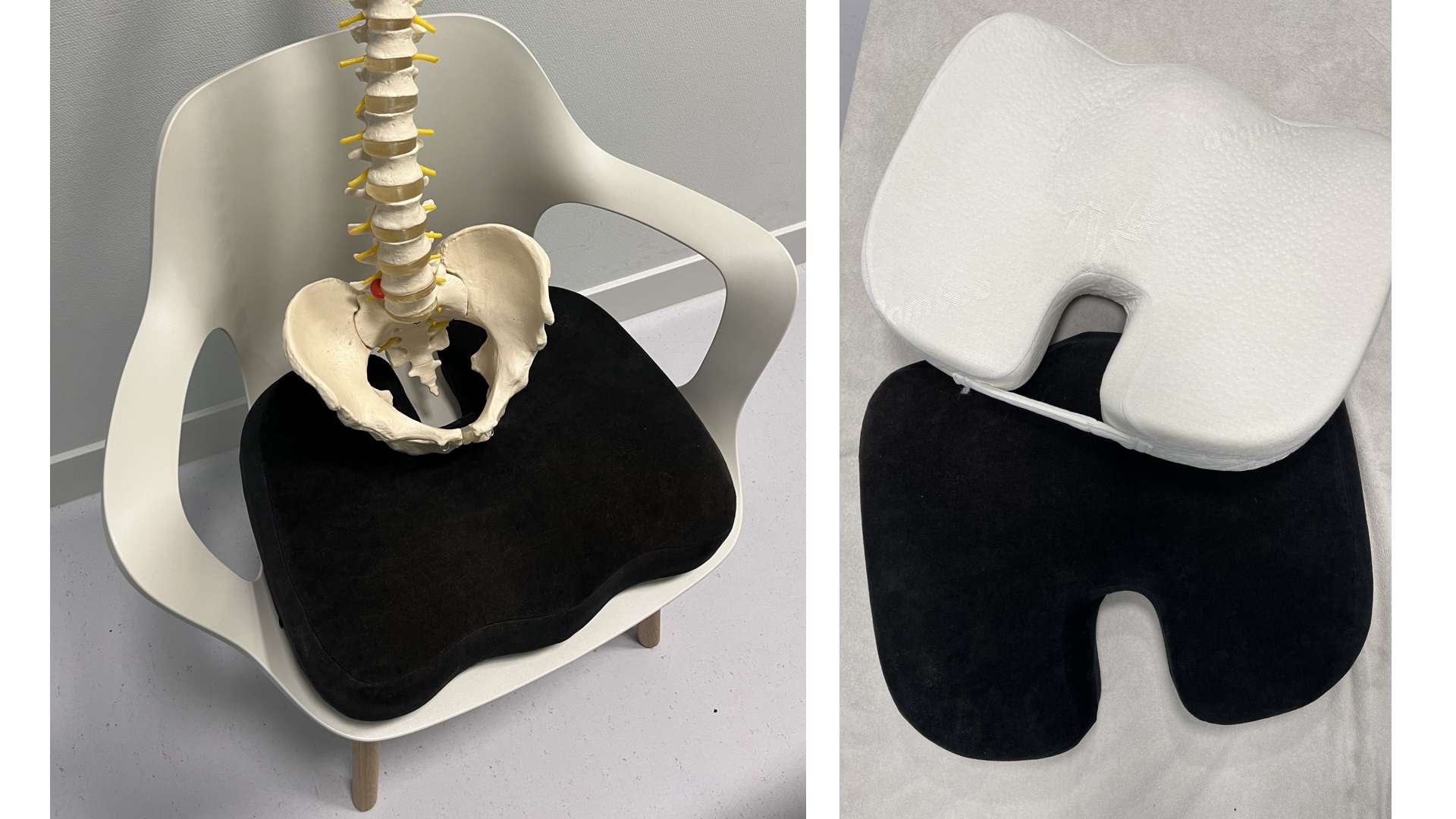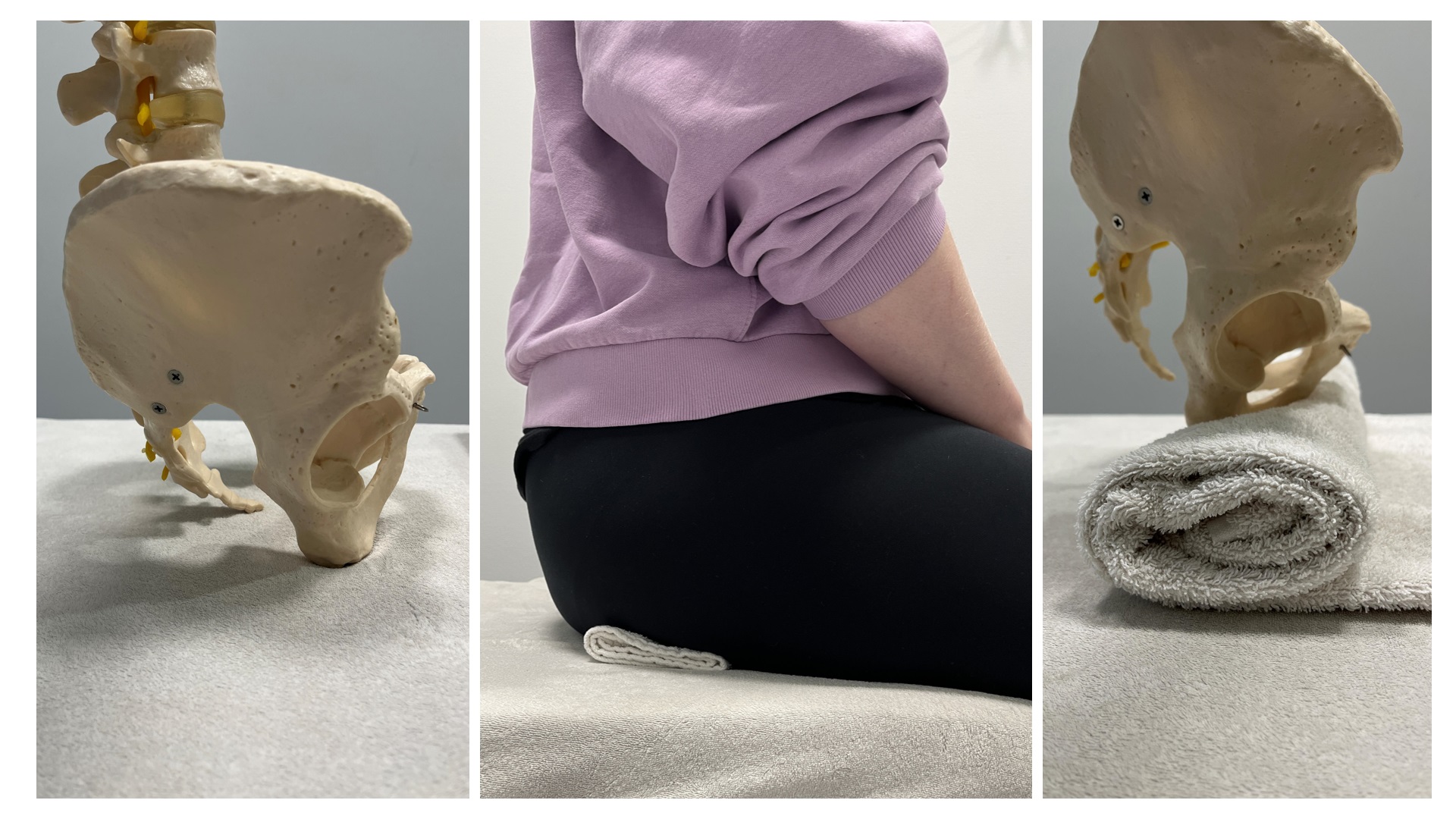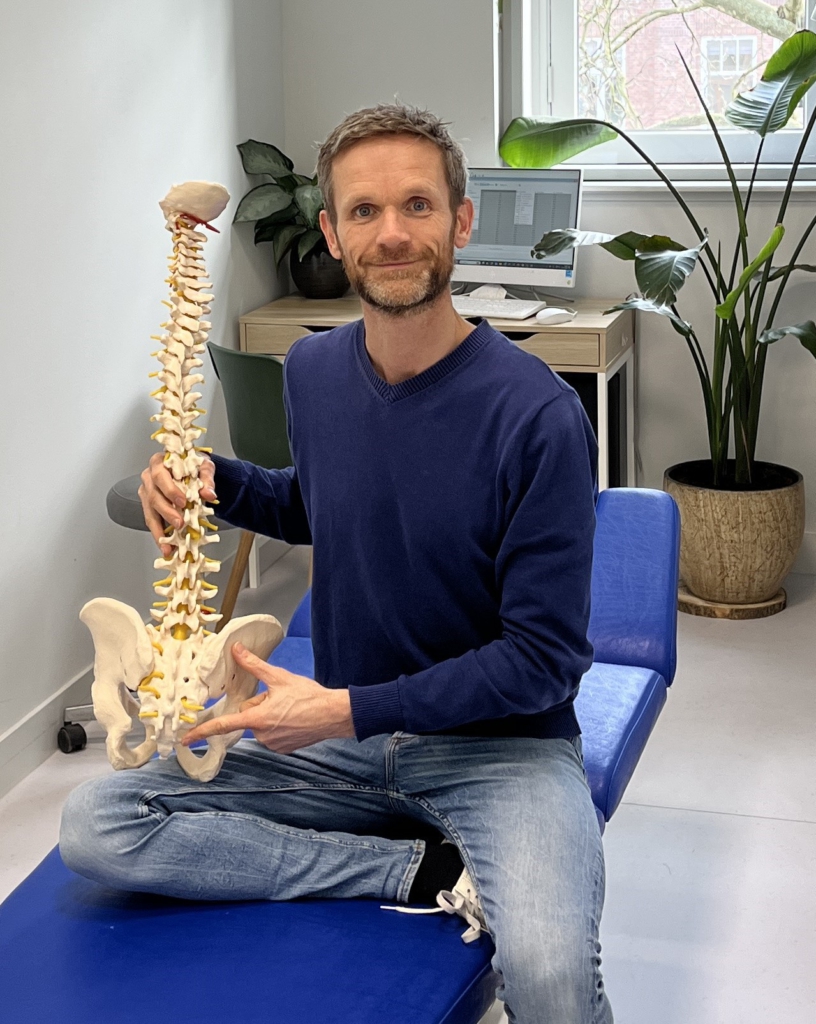Tips
On this page you will find multiple tips that can help you to reduce or prevent the tailbone pain.
Reduce the pain during sitting
Sitting is the number one problem people experience when they have tailbone problems.
What to do here?
a) the tailbone cushion

There are specific cushions that reduce the pressure on the tailbone during sitting because there is a gap at the back of it. Of course this isn’t a solution for the problem, but it can significantly reduce the experienced pain during sitting and they can be very useful if you have to sit for many hours a day.
I have several of these cushions at my workplace work and you can try them out if you come in for treatment. In most cases though the treatment reduces or solves the pain is quickly, so buying one is not even necessary.
b) the towel
Using a small towel is often just as effective as the special cushion and a lot easier to take with you.

Sitting is often so unpleasant because there is an increasing pressure on the tailbone when the posture sloughes a bit (see picture on the left). Because the shape of the pelvis is a bit different for women, they often experience more problems with this. Sitting upright reduces that pressure and the pain is often reduced by it directly.
To help lessen the pressure on the tailbone, the distance to the surface below can be increased a bit. This can be easily achieved by folding a small towel into a flat roll of around ten centimeters, and place it under the sitting bones (the bony structures you feel when you sit on your hands and move back and forth a bit).
c) towel and back support

Sitting for a more extended period is sometimes inevitable. If you need to sit for a longer period of time like in a car, an airplane or on a train, you can next to the towel under the buttocks (and even better a tailbone cushion if you have one), also support the back with a vest, sweater, blanket or towel and this support will be a bit more in diameter then for underneath the buttocks.
Roll it up and place it at the deepest point of the lumbar lordosis. This is there where your forearm rests if you place it horizontally across your lower back. Make sure you don’t position it too low because then you push the whole pelvis forward and tilt it backwards. This leads to sitting more slouched and increases the pressure on the tailbone. Also make sure you zit in the back of the seat. In this way the towel will help to arch the back a bit more so the body weight is being transfered more to the front part of the buttocks, which frees up the tailbone.
Reduce the pain while lying down
Lying on the back is often painful for people with tailbone problems. The reason for this is that the deep hip flexor, the psoas muscle, is tight or tensed (often due to too much sitting and/or stress), what makes the lower back hollower. This pushes the tailbone more towards the surface below and that can lead to a painful pressure. A pillow or role below the knees often gives direct relief of this.

The most relaxed way for lying down is mostly on the side, if needed with a pillow between the knees. In this position you can also try to apply a bit of stretch on the tailbone by pushing the upper leg a bit forward and aiming for stretch to occur at the tailbone (best felt when the knees and hips are both at a 90 degree angle). This is a very subtle movement and needs some practice often, but can be very relieving.
Reduce the pain while cycling

Riding a bike often is painful for people that experience pain at their tailbone. Make sure you aren’t sitting too much on the front part of your saddle (like most people do).
The more you position yourself toward the rear end of the saddle, the less pressure there is on the tailbone and you use the saddle like it is meant to be used. The wider back part of the T-shaped saddle is what is supposed to support the sitting bones.
There are also saddles with a special gap at the back to take away the pressure on the tailbone and that works in the same way as the tailbone cushion. But also in this case; before you invest money in attributes for relief, a treatment of a specialised therapist often leads to a quick and durable relief or solution of the problem.


